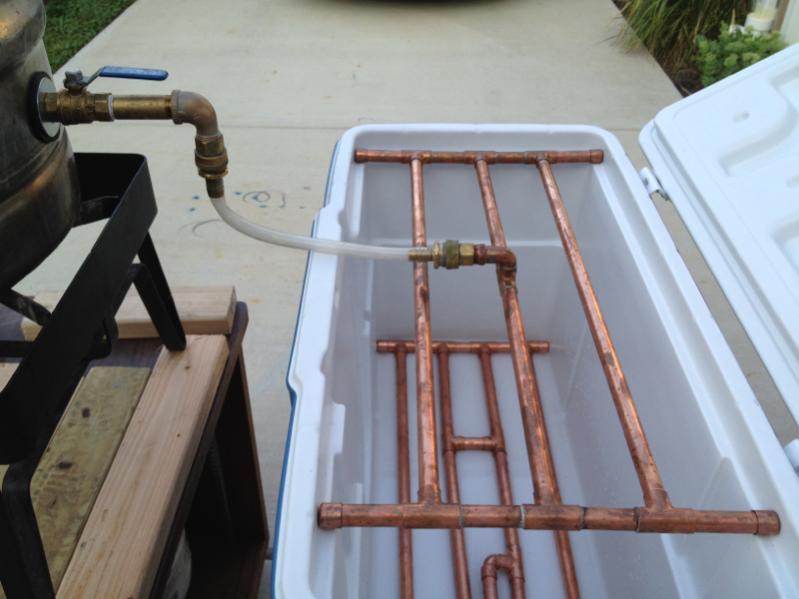wildwest450
Well-Known Member
- Joined
- Dec 27, 2007
- Messages
- 8,978
- Reaction score
- 191
that most batch spargers drained their first first runnings completely, then added sparge water, stirred, vourlafed, drained then repeated (for split sparges).
If so, what would be be the benefit to this as opposed to how John Palmer describes how to do it? Im very new to all grain brewing (One batch) and am trying to improve my effienciecy and technique.
John's method: Drain off the first runnings into a quart pitcher. The wort will be cloudy with bits of grain. Slowly pour the wort back into the grainbed, recirculating the wort. Repeat this procedure until the wort exiting the tun is pretty clear (like unfiltered apple cider). It will be amber colored, but not cloudy. It should only take a couple quarts.
Once the wort has cleared, drain the wort carefully into your boiling pot. Fill the pot slowly at first and allow the level to cover the outlet tube. Be sure to have a long enough tube so that the wort enters below the surface and does not splash. The splashing of hot wort before the boil can cause long term oxidation damage to the flavor of the beer.
Watch the outflow of wort, you do not want to lauter too fast, as this could compact the grainbed and you would get a stuck sparge. A rate of 1 quart/minute is the most common. Allow the wort level in the Tun to drop until it is about an inch above the level of the grain. Now start adding the sparge water, either from the hot water tun or by pouring in a couple quarts at a time, onto the coffee can lid, maintaining at least an inch of free water above the grainbed.
If so, what would be be the benefit to this as opposed to how John Palmer describes how to do it? Im very new to all grain brewing (One batch) and am trying to improve my effienciecy and technique.
John's method: Drain off the first runnings into a quart pitcher. The wort will be cloudy with bits of grain. Slowly pour the wort back into the grainbed, recirculating the wort. Repeat this procedure until the wort exiting the tun is pretty clear (like unfiltered apple cider). It will be amber colored, but not cloudy. It should only take a couple quarts.
Once the wort has cleared, drain the wort carefully into your boiling pot. Fill the pot slowly at first and allow the level to cover the outlet tube. Be sure to have a long enough tube so that the wort enters below the surface and does not splash. The splashing of hot wort before the boil can cause long term oxidation damage to the flavor of the beer.
Watch the outflow of wort, you do not want to lauter too fast, as this could compact the grainbed and you would get a stuck sparge. A rate of 1 quart/minute is the most common. Allow the wort level in the Tun to drop until it is about an inch above the level of the grain. Now start adding the sparge water, either from the hot water tun or by pouring in a couple quarts at a time, onto the coffee can lid, maintaining at least an inch of free water above the grainbed.




